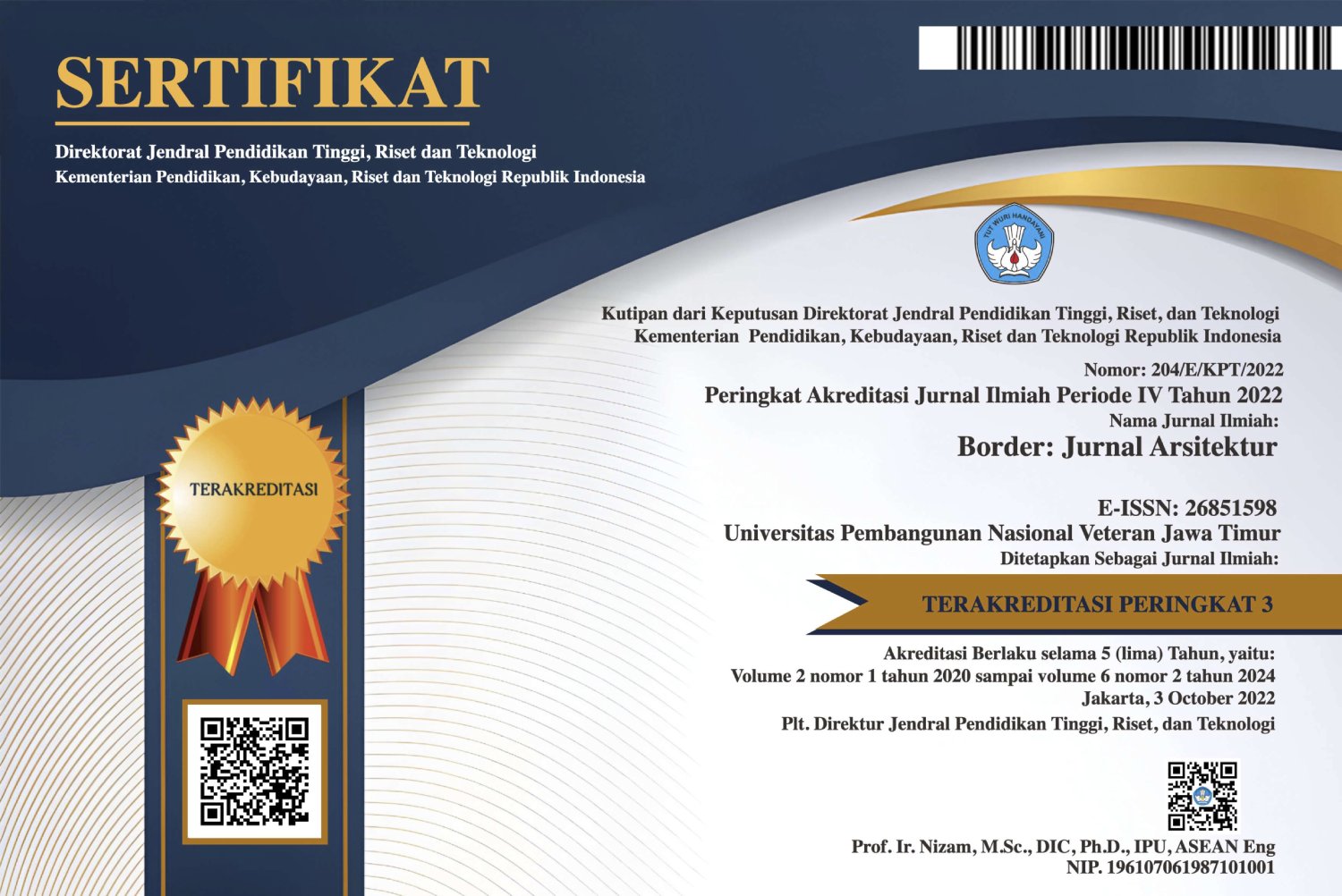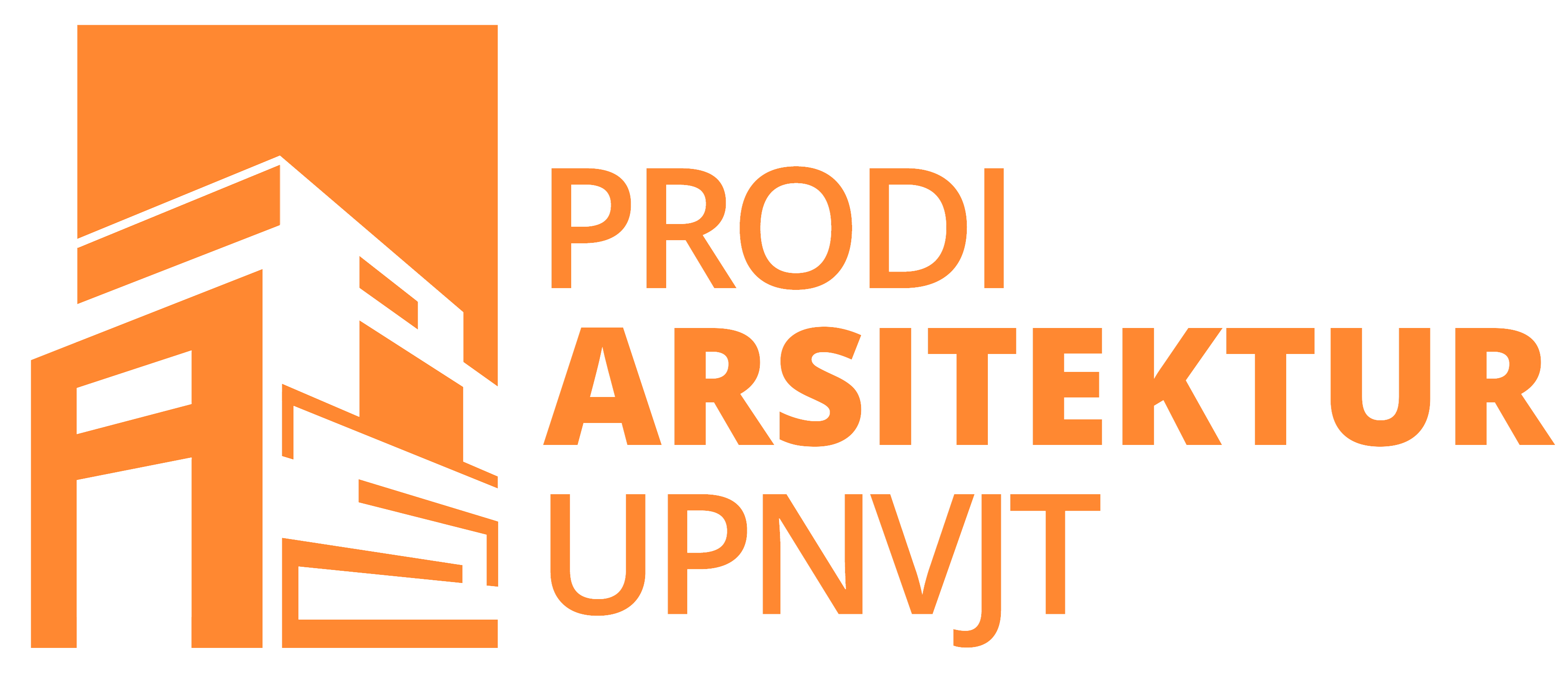About the Journal
Border : Jurnal Arsitektur is a journal published by the Department of Architecture of Faculty of Architecture and Design, Universitas Pembangunan Nasional "Veteran" Jawa Timur that accommodates the results of research and products of scientific thought in the field of architecture and the built environment. Border : Jurnal Arsitektur accepts in English language. This journal will publish 2 (two) times a year, June and November, and reviewed by independent reviewers with expertise in the field of architecture and the built environment.
Authors are invited to send articles resulting from the research results, conceptual ideas, review of research processes, original critical ideas, and studies related to architectural phenomena and the built environment.
Topics
This journal is focusing on publishing articles with topics from the field of architecture, theory and architectural criticism, urban design and planning, urban and residential areas, environmental architecture, building structures, and other areas of the built environment.
Announcements
Server Disturbance
Current Issue

This volume presents a curated selection of articles that address current discourses in architecture and the built environment through cultural interpretation, environmental performance, spatial analysis, and sustainable design strategies. Featured topics include the embodiment of nature in Jawi Temple architecture, the psychological impact of urban waterscape design, visual and movement analysis using isovist polygons in sports facilities, and the assessment of thermal comfort in older adult housing. These studies emphasize the role of spatial quality, human perception, and performance-based approaches in contemporary architectural practice.
In addition, this issue explores sustainability and contextual responsiveness through the integration of green building principles with Islamic jurisprudence in ablution wastewater reuse for urban mosques, as well as investigations into spatial comfort in government office design and the physical deterioration of historic urban facades in Surabaya. Collectively, the articles offer critical insights into how architecture negotiates cultural values, environmental responsibility, and user well-being, reinforcing the journal’s commitment to advancing knowledge that supports resilient and human-centered built environments.

















